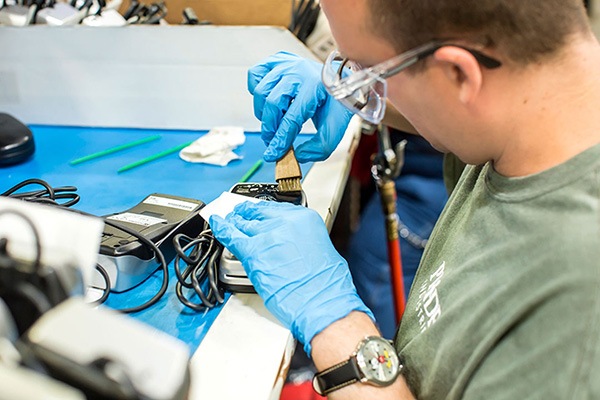October is National Disability Employment Awareness Month and an opportunity to highlight an untapped talent pool—people with disabilities.
While tech layoffs make headlines, turnover and labor shortages continue to plague manufacturing. Retention in manufacturing is low, with an annual turnover of 40 percent, according to the Bureau of Labor Statistics—44 percent in 2020, 39 percent in 2021, and 40 percent in 2022. Low retention is a drag on productivity and the bottom line, with recruiting, onboarding, and retraining costing $3,500 to $10,000 per employee.
A Deloitte and the Manufacturing Institute study found that the manufacturing labor shortage could result in 2.1 million unfilled jobs, costing businesses a trillion dollars by 2030.
The labor shortage has people like Gartner’s Emily Rose McRae calling companies to look beyond default talent pools. “Organizations can no longer meet their talent needs through traditional sourcing methods and candidate pools,” she said.
More than 10 percent of people aged 16–64 in the United States—22 million people—have a disability. The disability employment ratio—the percentage of the population that is employed—hovers around 30 percent. In comparison, the rate for persons without a disability in the same age group is about 75 percent.
But that’s changing fast. In recent years, the disability employment ratio for working-age adults has risen to record highs, reaching 38 percent in August, according to the monthly National Trends in Disability Employment (nTIDE) report.
Still, that leaves some 14 million people with disabilities available for work.

InterMotive Vehicle Controls in Auburn, California, found gold in this hidden talent pool as far back as 2008. Co-founders Linda and Greg Schafer, CEO and President, respectively, were searching for an outsourcing partner to manufacture some of the company’s PCBAs and discovered PRIDE Industries, a contract electronics manufacturer with a mission to create employment for people with disabilities.
“The company’s capabilities blew me away,” Greg said. “The people, the processes, and the technology are state of the art. But what sets the company apart are the people—I’d never seen a manufacturing floor where employees were so delighted to be there.”
Fast forward 15 years, and PRIDE Industries now manufactures 46 parts for InterMotive—24 cable assemblies and 18 mid to high-volume PCBAs with a workforce where approximately 50 percent of employees have a disclosed disability.
Doug Jacot is the Director of Manufacturing at Acushnet Golf, which counts Titleist and FootJoy among its brands. Every day, a team of five employees with disabilities builds about 1,000 boxes and 3,000 packaging inserts at the company’s San Diego County manufacturing facility.
Retention in manufacturing is a constant challenge. “It’s hard to find people to do this work,” Jacot said. He has been hiring people with disabilities for more than 20 years. “They are the most can-do group I’ve ever been around, and they elevate the attitudes of everyone around them. If I could hire a hundred of them, I would.”
The business benefits of employing people with disabilities are proven, if not well-known. A landmark Accenture study found that companies that actively include employees with disabilities achieve 28 percent higher revenue, double the net income, and 30 percent better margins than those that don’t.
Research published by the National Institutes of Health found that the economic benefits of hiring people with disabilities include higher profits due to lower employee turnover, increased employee reliability, higher productivity, and greater customer loyalty and satisfaction.
One of the reasons employers often cite for not including people with disabilities is the added cost of reasonable accommodations that the Americans with Disabilities Act (ADA) requires. That myth is long busted. In a survey of 3,528 employers by the Job Accommodation Network (JAN), 49.4 percent of employers said accommodation for employees with disabilities “cost absolutely nothing.” Of those that incurred a one-time cost, the median expense was $300.
Meanwhile, the Society for Human Resources Management pegs the average cost of replacing an hourly worker at $1,500 each—far more than the cost of accommodating an employee with disabilities.
Hiring people with disabilities is a low-risk, high-reward option.

About the Author:
Darelyn Pazdel is the Vice President of Workforce Inclusion at PRIDE Industries, the nation’s leading employer of people with disabilities.
Scott Ellyson, CEO of East West Manufacturing, brings decades of global manufacturing and supply chain leadership to the conversation. In this episode, he shares practical insights on scaling operations, navigating complexity, and building resilient manufacturing networks in an increasingly connected world.